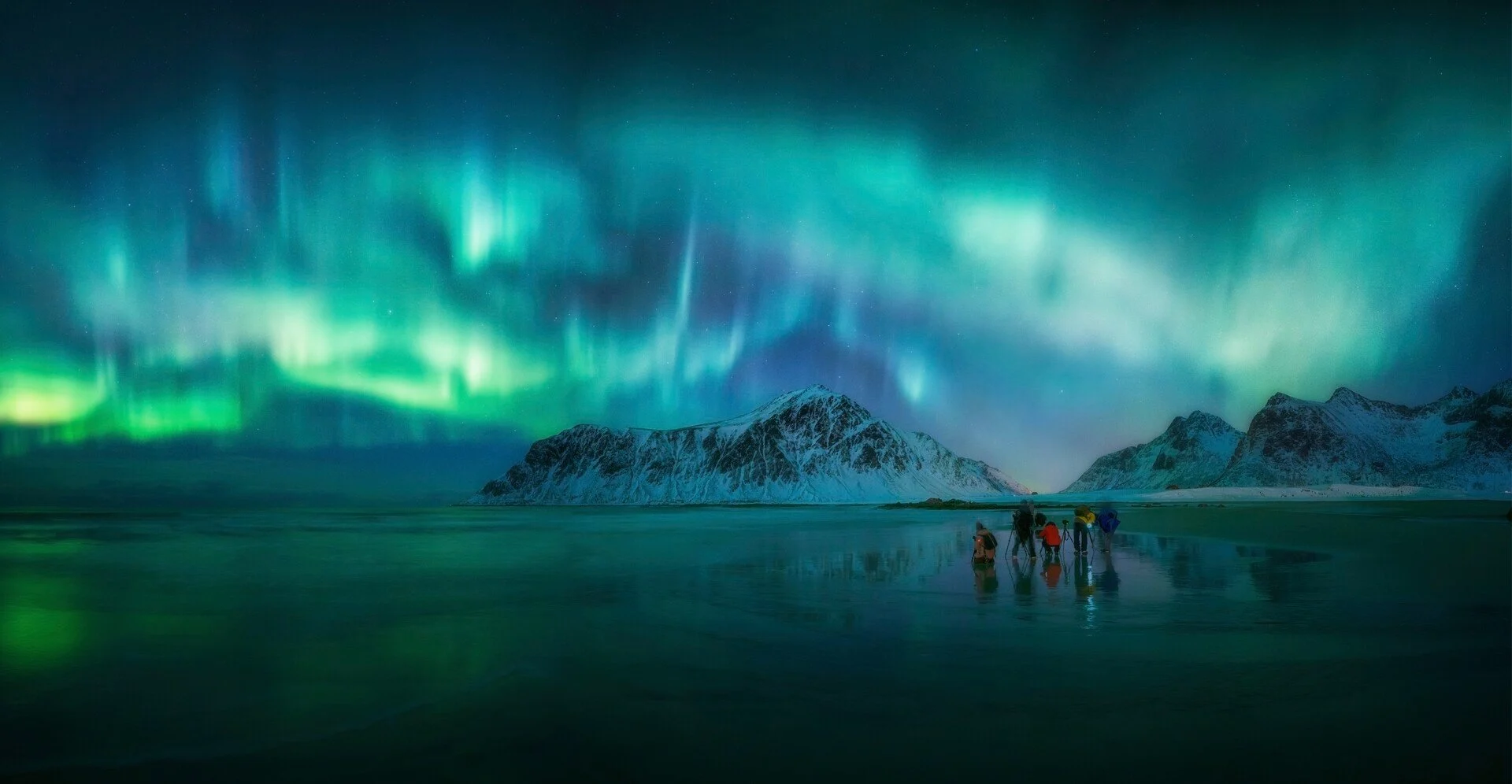
The Lofoten Islands
With jagged mountains rising out of the sea, small fishing towns scattered along a rugged coast and sandy beaches fringed by fjords, Lofoten is often billed as one of the most picturesque parts of Norway.
Where are the Lofoten Islands?
Extending for around 175 kilometres, the Lofoten archipelago consists of many islands and is administered by the municipalities of Vågan, Vestvågøy, Flakstad, Moskenes, Værøy and little Røst, far out in the ocean to the southwest.
Despite its location above the Arctic Circle – at the same latitude as Greenland – Lofoten experiences a notably warmer climate thanks to the circulation of the Gulf Stream. Nonetheless, it is considered a subarctic destination.


Activities on the Lofoten Islands
The islands offer a variety of experiences, from RIB adventures and kayak tours to horse riding and brewery tours. Go fishing for metre-long cod, witness the magic of the Northern Lights or stay in an authentic fisherman’s hut.
Whatever you choose to do, no one forgets a visit to Lofoten.
Stay in a rorbu
Though you’ll find rorbu (fishermen’s cabins) all along the Norwegian coast, they are most associated with the Lofoten Islands. Most notable at the water’s edge, they are often built atop sturdy timber piles.
Originally providing a place for cold, exhausted fishermen to offload their equipment and find shelter for the night, the cabins now attract tourists from near and far. Today, many rorbu serve as cafes and restaurants or are rented out as accommodation.


Enjoy some top-notch fishing
With water at every turn, it’s not surprising that Lofoten is renowned for its fishing. Seabed variations in Vestfjorden limit the exchange of water between the fjord and the open sea, producing temperatures that make it a favoured spawning ground for skrei between January and April.
Indeed, thousands of fishermen make their way here every year for the Lofotfiske. The cod harvested here is a delicacy that graces dining tables around the world. You too can set sail to reel in cod, haddock and wolf fish on a boat trip.
Hike spectacular Svolværgeita
No visitor to Svolvær, Lofoten’s largest settlement, could possibly miss the sight of Svolværgeita (the Svolvær Goat): two rock formations shaped like goat horns that loom over the town. This double peak, 590 metres above sea level, caps off nearby Mount Fløya.
There are several climbing routes up the mountainside, and the vista from the top out across Svolvær and the sea is sensational. And if you’re brave enough, you can jump the metre and a half from one goat’s horn to the other!


Experience nature’s greatest lightshow
With their location above the Arctic Circle and beneath the Auroral Oval, the Lofoten Islands are a fantastic place to witness the magic of the Northern Lights.
Between 7 December and 5 January, Svolvær is cloaked in 24-hour darkness, giving visitors the best chance of seeing the aurora shimmering in the star-studded sky.
Discover the islands’ surreal beaches
During the summer months, visitors to the Lofoten Islands will experience the Midnight Sun. Locals will tell you that this 24-hour sunlight is best viewed from the archipelago’s western beaches, such as Utakleiv and Eggum on Vestvågøy Island. Also on the island is Unstad Beach, a popular spot for surfers as there are good waves during stormy sunsets.
Elsewhere, the northern island of Gimsøy features a series of small but delightful beaches that wouldn’t look out of place in the Caribbean.


Meet the clown of the sea
Most visitors to Norway want to catch a glimpse of a puffin, and there is no better place to do so than Røst.
Lying at the southernmost tip of Lofoten, this tiny island is home to not only the country’s largest puffin colony but also the largest number of nesting birds in Norway – some 25 percent of the country's seabird population.
Explore ancient civilisations
On the southern islands, adventurous travellers can see vestiges of settlements tracing back thousands of years. The enormous Kollhellaren Cave in Refsvika is a coastal cavern that houses cave paintings that are some 3,000 years old. Tours to this area are most commonly scheduled between May and September.
Located close to Napp village, Storbåthellaren Cave is the oldest known Stone Age settlement in the region. Inside the cave are thick layers left by ancient civilisations around 5,500 years ago. When archaeologists delved into the cave, they found fishing tackle, spears and arrowheads and ceramics as well as human bones.


